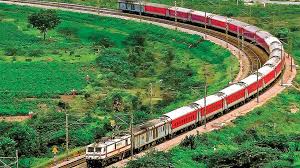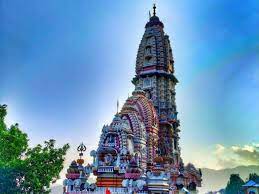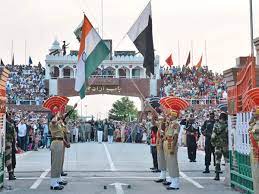THE VIBRANT CELEBRATION OF NOWRUZ

Nowruz, also called "Norooz," is a traditional festival that marks the Persian New Year. The celebration of Nowruz has been an integral part of the cultures of the Persian-speaking world for more than 3,000 years. It has its roots in Zoroastrianism, the ancient religion of the Persians, and signifies the beginning of the spring season, symbolizing renewal, growth, and the triumph of light over darkness. Though Nowruz is traditionally celebrated in Iran and Central Asia, it has extended its influence to various regions, including India, where several communities celebrate it with much fervor.
In India, the festival of Nowruz is celebrated mainly by the Parsi and Irani communities, who are descendants of Persian immigrants who arrived in India centuries ago. Though their numbers are relatively small compared to other communities, their presence is felt through the cultural contributions they have made to Indian society, including the celebration of Nowruz.
IMPORTANCE OF NOWRUZ
The significance of Nowruz is multifaceted, intertwining cultural, religious, and seasonal elements. It represents a time for renewal, where individuals reflect on their actions from the past year and set new intentions for the coming year. For Zoroastrians, Nowruz is an occasion to honor the divine and the forces of nature, and it is seen as a time when the forces of good triumph over evil, symbolized by the transition from winter to spring.
In Persian culture, the celebration of Nowruz is not just a personal or familial event; it is a national one, linking communities across borders in a shared celebration of life. The festival is observed in more than 20 countries, including Iran, Afghanistan, Azerbaijan, Central Asian republics, and the Indian subcontinent. Its significance extends beyond its religious and cultural roots to become a time for solidarity and unity among diverse groups of people.
Nowruz's global recognition as a cultural heritage has led to its designation by the United Nations as the International Day of Nowruz, highlighting its widespread importance and the values of peace, harmony, and respect for nature it embodies.
NOWRUZ IN INDIA
In India, the celebration of Nowruz is largely confined to the Parsi and Irani communities, though other groups, including the Kurds, also observe the festival in some parts of the country. The Parsis, who are followers of Zoroastrianism, arrived in India from Persia (modern-day Iran) around the 10th century to escape religious persecution. They brought with them many cultural practices, one of which was the celebration of Nowruz.
Nowruz falls on or around March 21st, which coincides with the vernal equinox, marking the official start of spring in the Northern Hemisphere. In India, the festival is typically celebrated over several days, with the key day being the first day of the Iranian year. For the Parsi community, the festival is not only a religious observance but also an occasion to celebrate their cultural identity and history.
PREPARATIONS FOR NOWRUZ
The preparations for Nowruz in India are elaborate, and families spend a great deal of time preparing their homes, cooking special dishes, and organizing festivities. The week leading up to Nowruz is marked by cleaning and decorating the home, a practice that symbolizes the clearing away of the old and welcoming in the new. Parsis believe that cleaning the house before the festival is essential for spiritual renewal and the removal of any negativity that may have accumulated over the past year.
On the eve of Nowruz, people often visit the local fire temple, where they offer prayers, perform religious ceremonies, and seek blessings for the coming year. Many also make it a point to visit relatives and friends, exchanging good wishes for health, prosperity, and happiness.
The Nowruz celebrations typically begin early in the morning with prayers and rituals. Families gather for a ceremonial breakfast and dress in new clothes to mark the beginning of the New Year.
Food plays a central role in Nowruz celebrations, with dishes symbolizing renewal, fertility, and joy. In India, the Parsi community enjoys a variety of traditional dishes. Iconic foods include Sali Boti, a lamb stew served with crispy potato sticks; Patra, a steamed colocasia leaf snack with spiced gram flour paste; and Ravo, a saffron semolina pudding flavored with cardamom and nuts. Farcha, crispy fried chicken marinated in spices, and grilled Kebabs, tender meat pieces, are also enjoyed. Pulao, a fragrant rice dish with saffron, nuts, and raisins, complements the savory meals during the festivities.
Nowruz not only strengthens bonds within the Parsi and Irani communities but also serves as a reminder of the universal values of unity, growth, and the triumph of light over darkness. The rich traditions, delicious food, and heartfelt prayers reflect a deep connection to heritage and a bright vision for the future. Nowruz is more than just a New Year celebration; it’s a time for new beginnings, shared joy, and the promise of peace and prosperity for all.
You may like post

HIDDEN INDIAN SITES WORTHY OF UNESCO
Exploring India’s Sites That Should Be on the UNESCO World Heritage List

A JOURNEY THROUGH COUNTRIES THAT START WITH K
Discovering Countries That Start with K








